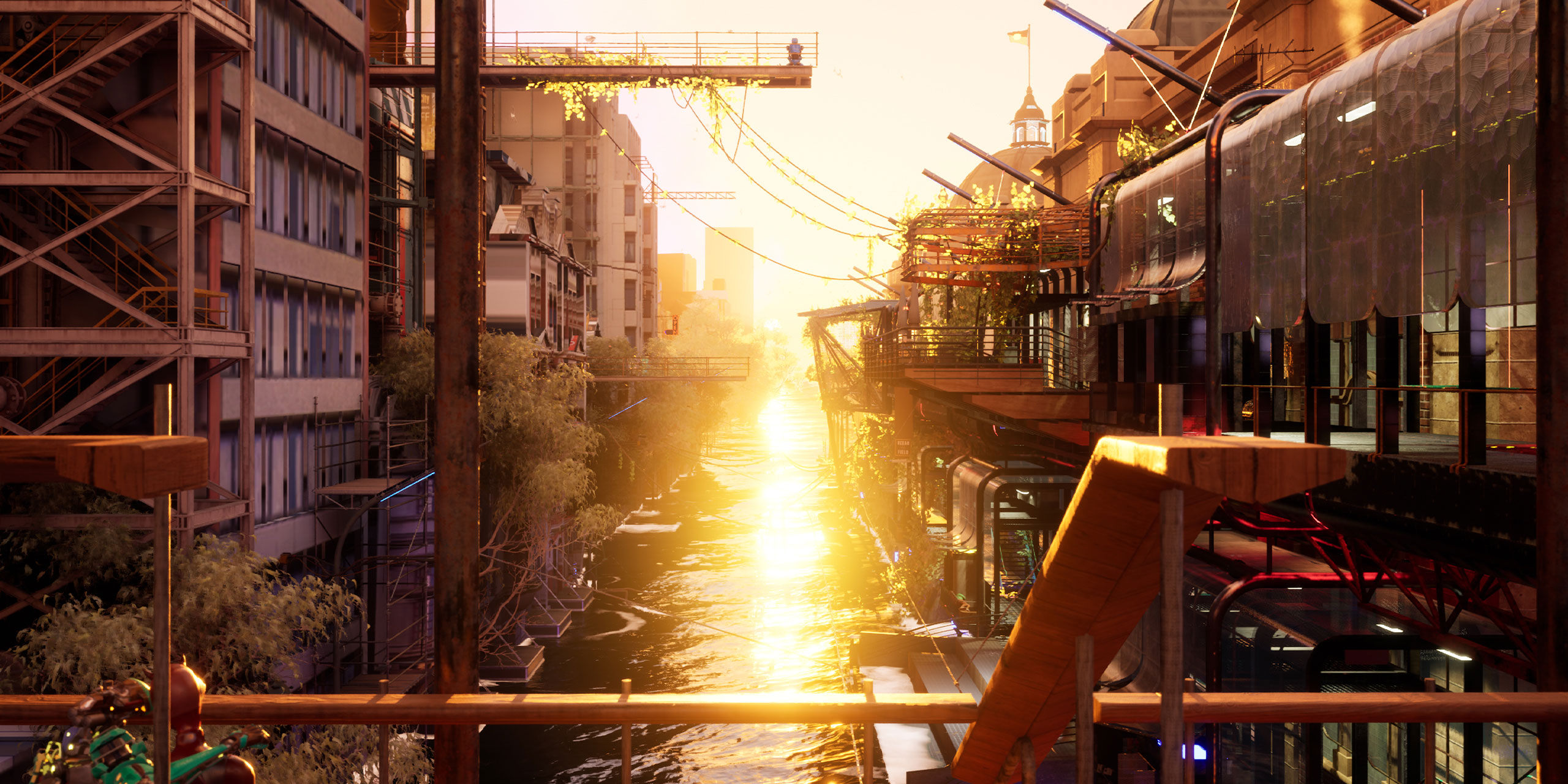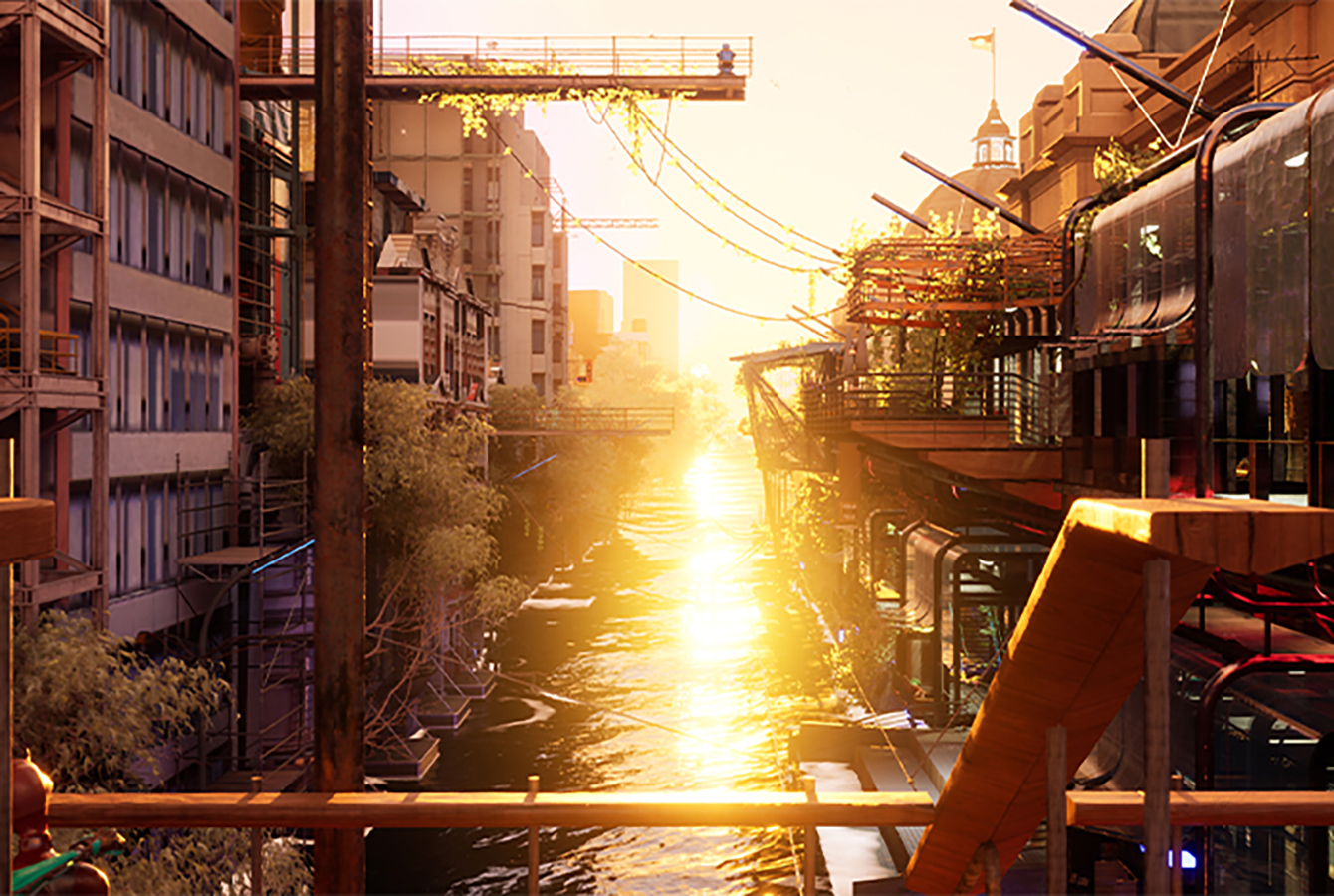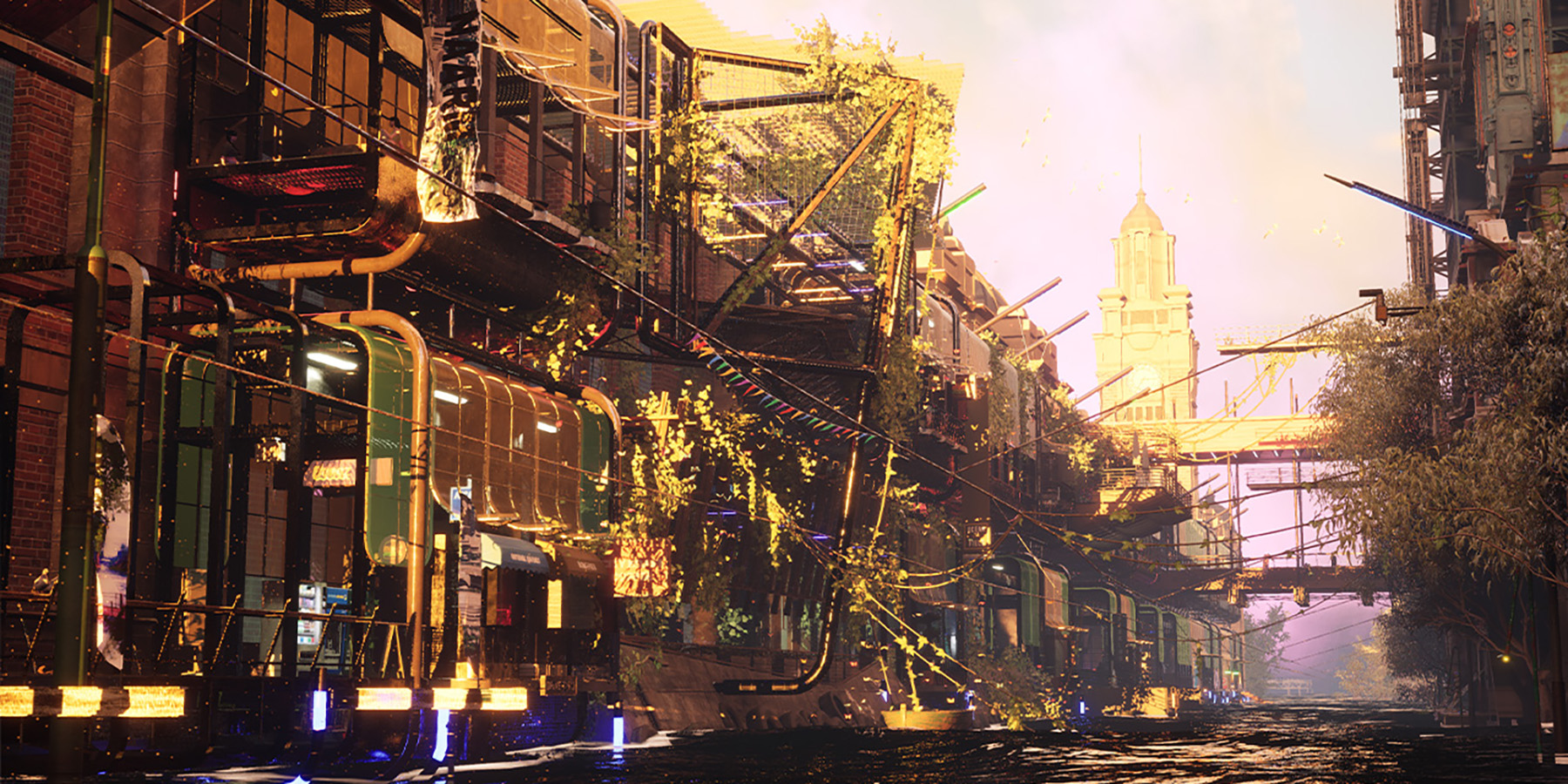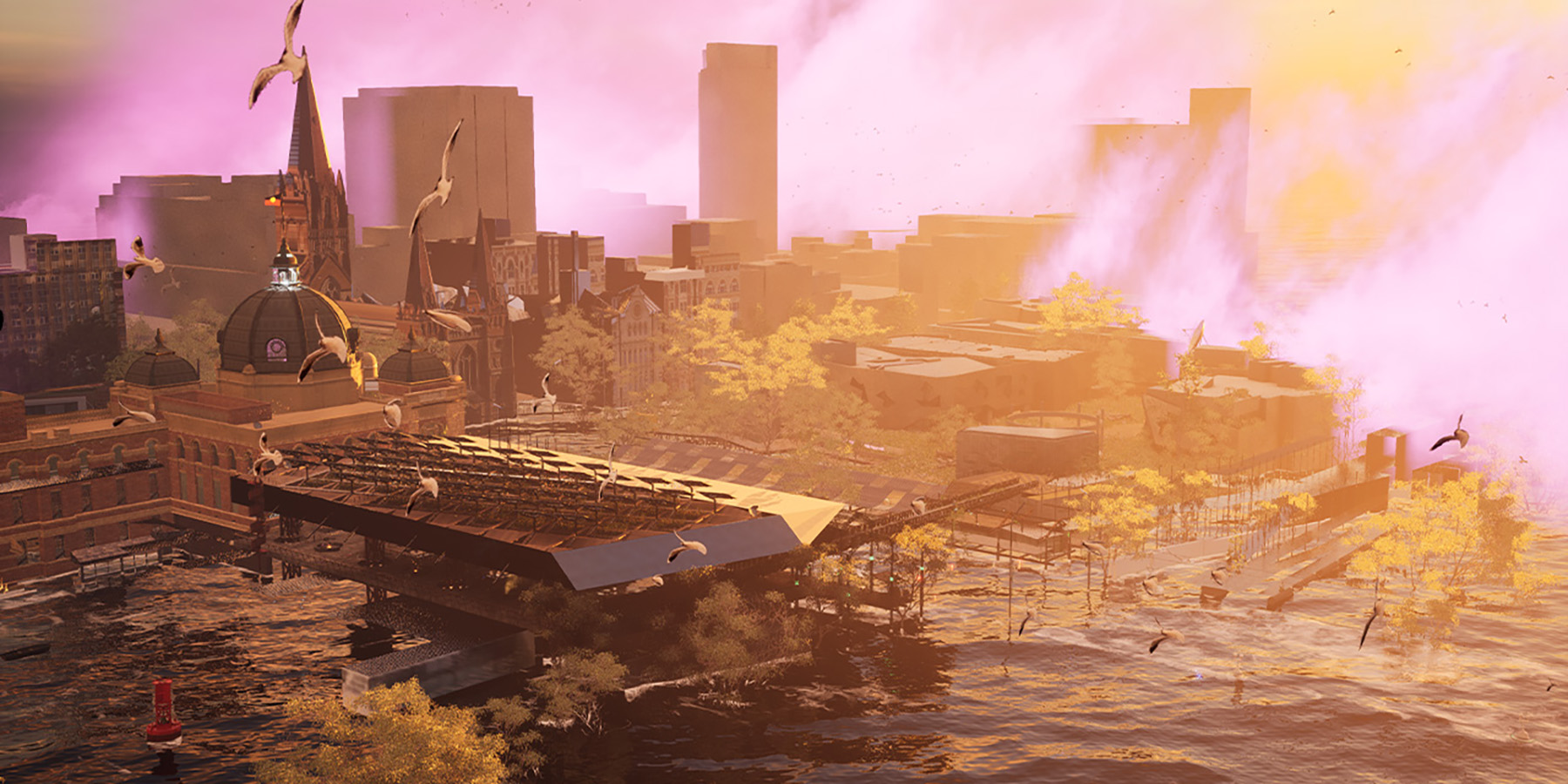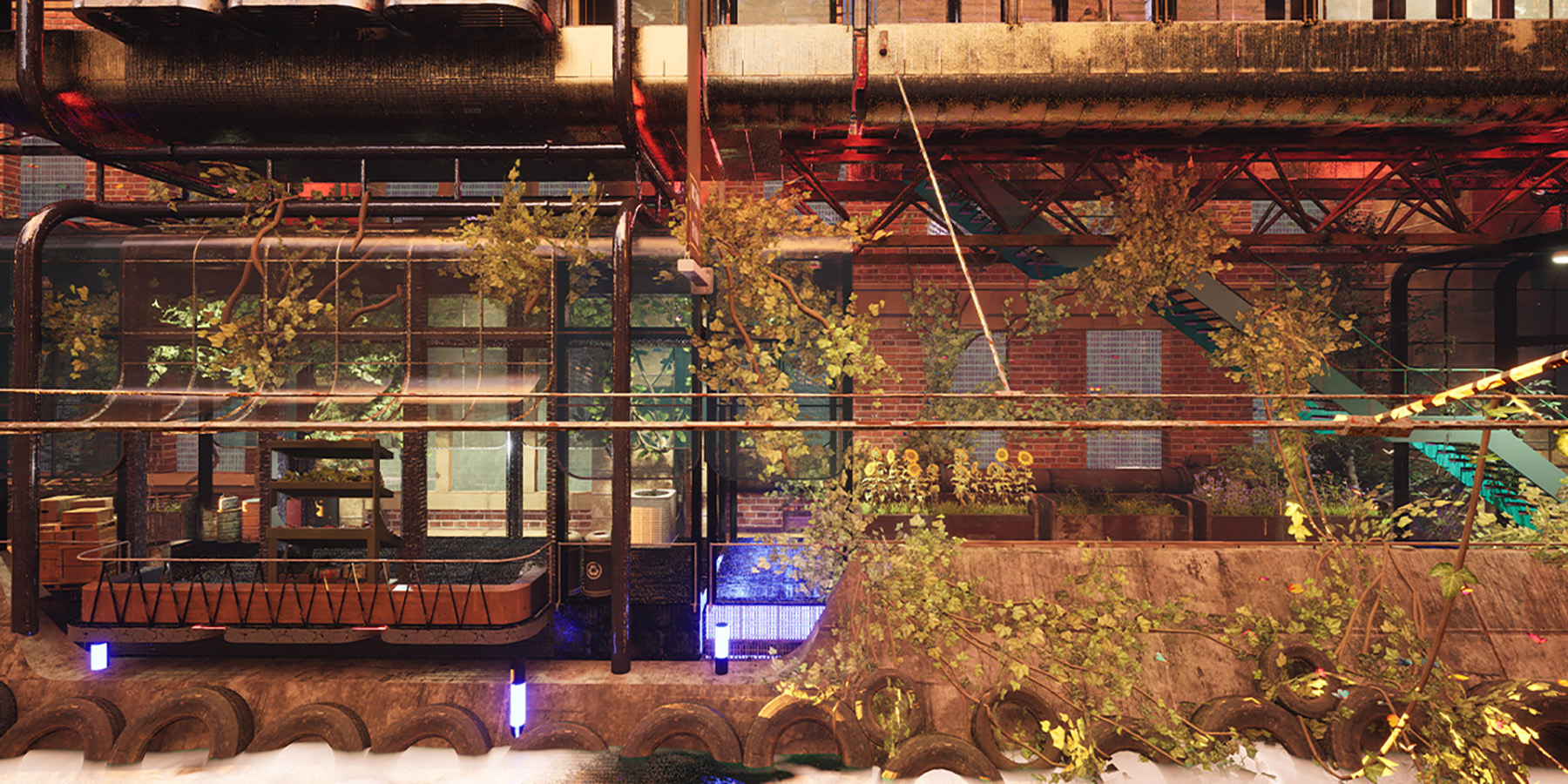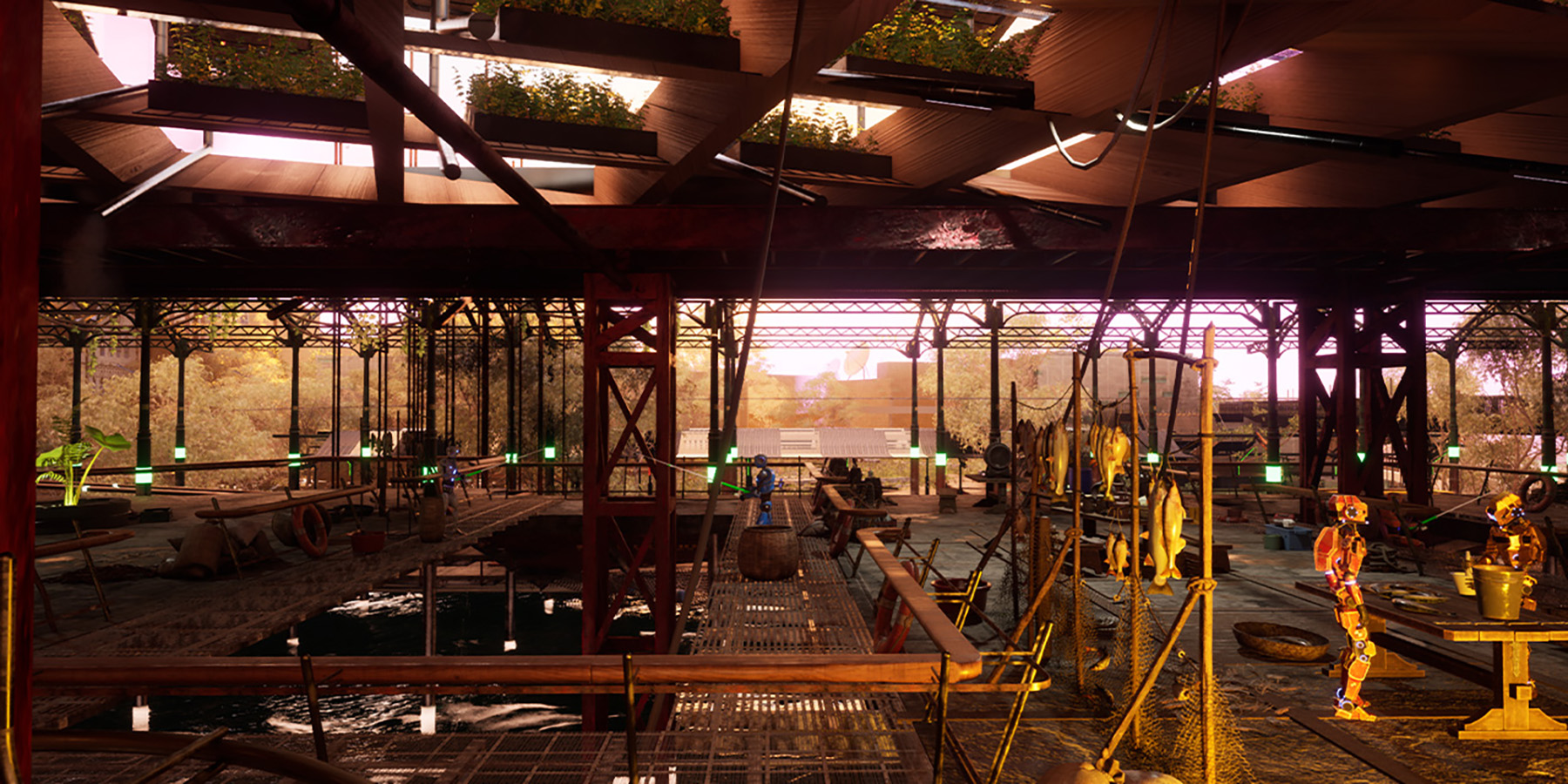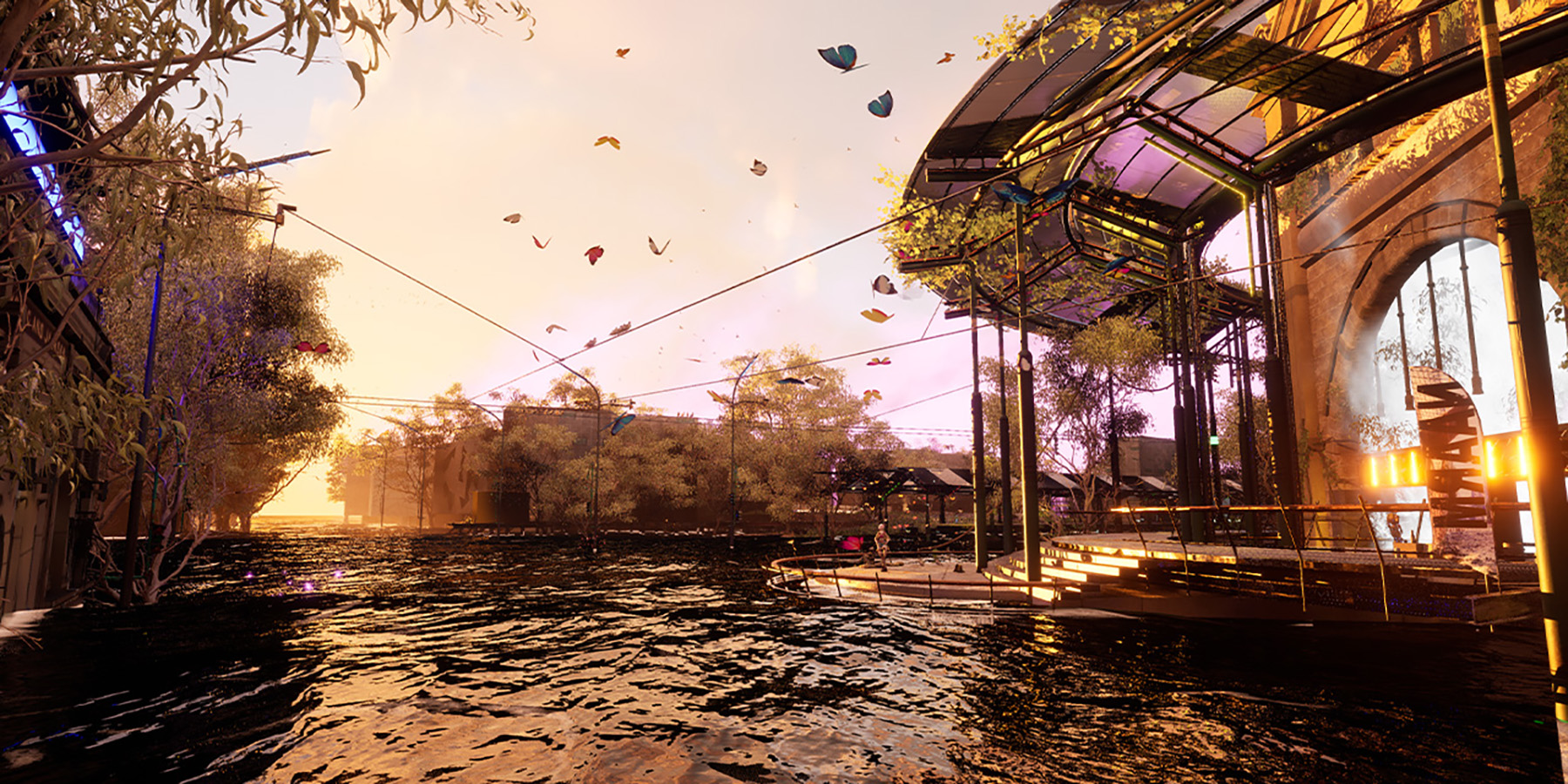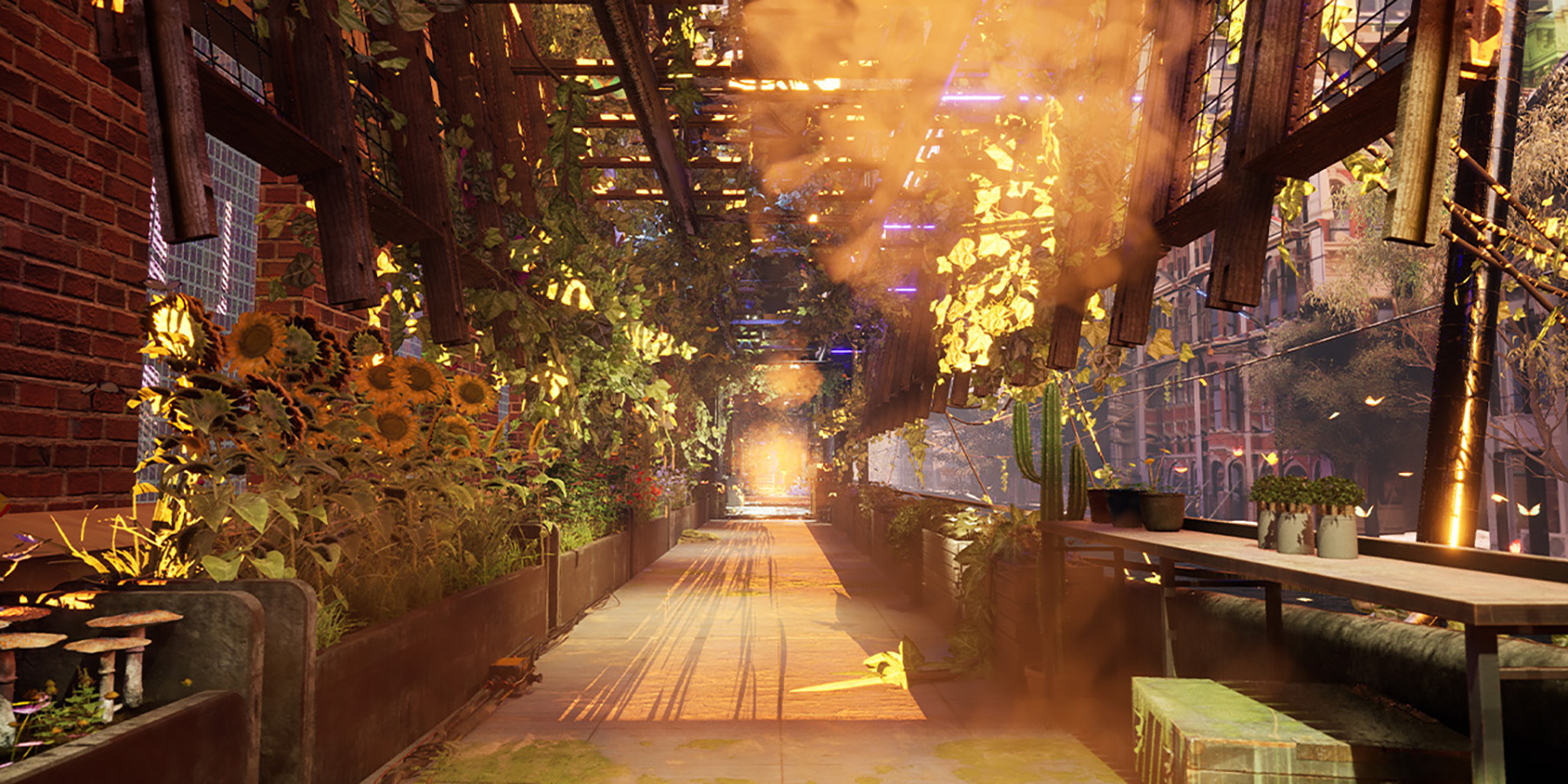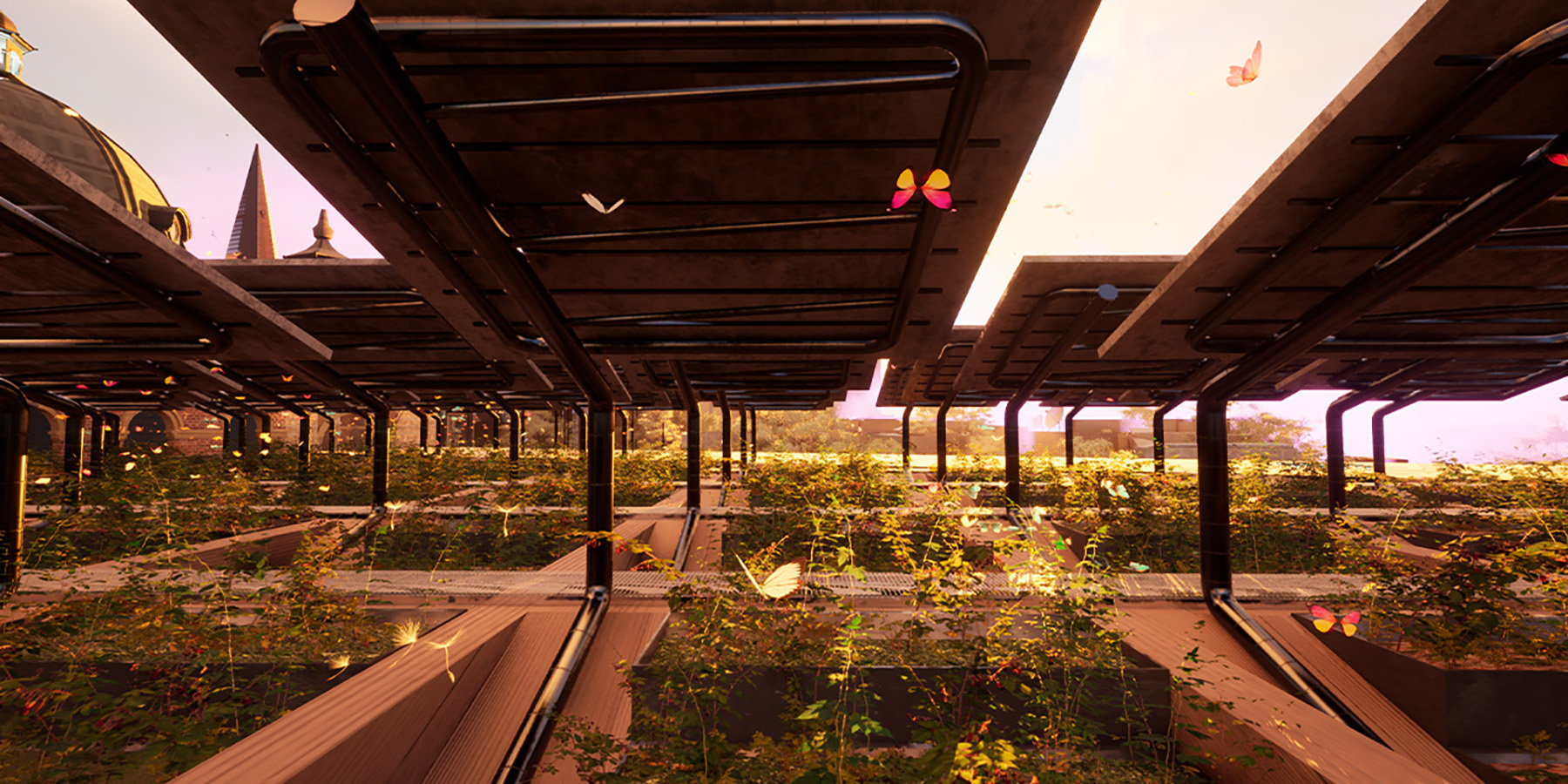Future Naarm: First Light was developed through a research and ideas-led, community-engaged, layered and iterative design process grounded in speculative cartography, architectural atmospheres, and worldbuilding as a critical practice. Initiated as a self-directed research project, the process began with investigations into the hydrological, cultural, and ecological histories of Naarm (Melbourne), focusing on Country, water systems, and future climate projections. The project unfolded through three major design phases.
First, conceptual mapping and narrative development established the spatial logic of a future Naarm shaped by flood, memory, new economies, civic infrastructures, affective spatial logic and care.
Second, architectural fragments and artefacts were modelled in Rhino with terrain, atmosphere and environment sculpted in Unreal Engine 5. These components were carefully composed to form a continuous explorable environment that evokes slowness, reflection, and speculative engagement rather than directive gameplay.
The third phase focused on experience: lighting, environmental cues, sound design, and navigation mechanics were calibrated to provoke mood and encourage user-led wandering. Unlike traditional game environments, there are no maps or instructions. The interface was deliberately minimal, encouraging intuitive exploration without UI distractions.
Testing across public installations, teaching environments, and peer feedback loops informed refinements. The final design was implemented as a standalone application, optimised for desktop use and exhibition deployment. It has been presented in pedagogical and public contexts, demonstrating its functionality, stability, and professional execution. By crafting an interactive world that engages users in reflection and critical imagination, the project not only met but expanded its brief by delivering an evocative, open-ended design outcome that bridges architecture, immersive media, and cultural narratives.
It exemplifies a process of deep, interdisciplinary collaboration with high design fidelity and speculative intent.

